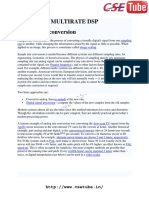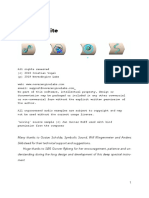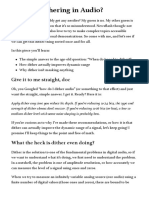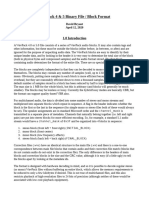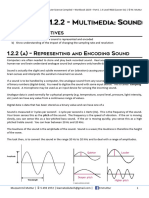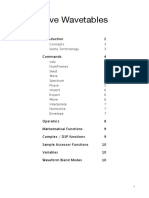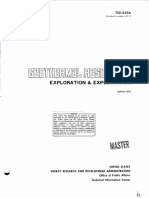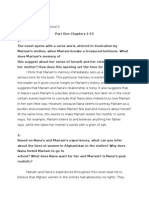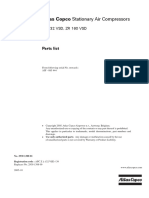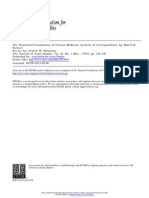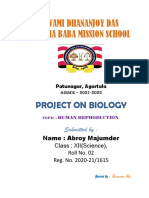A fast and high quality sampling rate converter SSRC written by Naoki Shibata Homepage : http://shibatch.sourceforge.net/ e-mail : shibatch@users.sourceforge.
net <Features> This program converts sampling rate of PCM wav file. Also, this program has a function to apply dither to its output and extend perceived dynamic range. Sampling rates of 44.1kHz and 48kHz are populary used, but ratio of these two frequency is 147:160, and it's not a small numbers. Therefore, sampling rate conversion without degradation of sound quality requires filter with very large order, and it's difficult to achive both quality and speed. This program achived relatively fast and high quality with two different kinds of filters combined skillfully. <Usage> ssrc [<options>] <input wav file> <output wav file> Usage of options are as follows : --rate <sampling rate> Specify sampling rate of output file. --att <value(dB)> Attenuate volume of output by specified value. --twopass Perform two pass processing so that clipping is avoided. At the first pass, the program converts sampling rate of input file and write to a temporary file in float numbers while scanning clippings. At the second pass, the program attenuate the volume so that clipping is prevented, and write to the output file. --normalize Normalize the wave file. --dither [<type>] Apply dithers to the output file. type 0 : no dither type 1 : no noise shaping type 2 : triangular dither type 3 : ATH based noise shaping --bits Specify quantization bit length. 8, 16 and 24bits are supported. --quiet Nothing is displayed except error. --pdf <type> [<amp>] Select probability distribution function and amplitude of noise. type 0 : rectangular type 1 : triangular type 2 : Gaussian --profile Specify profile "standard" profile : the default setting "fast" profile : about x2 speed, not so bad quality Only PCM coded wav files are used as input and output files. Input and output sampling frequency must satisfy a certain condition, but (probably) conversions between all populary used sampling frequencies are
�supported. If sampling frequencies of input and output are same, sampling rate conversion is not performed and only conversion of quantization bit length with optional dithering are done. <Compiling method> Specify endianness in the Makefile and just type make. <Caveats> Cumulatively applying dithers degrades sound quality. If you are editing sound files, save master file as non-dithered 24bit file, and apply dither only to the final 16bit output file. Dithered 8bit files contains strong supersonic, and listening to these files for long hours may damage your hearing. Dithered 16bit files are no problem since the power of the supersonic of dither is 1/65536 of those of dithered 8bit files. <Conditions of distribution> This program(except FFT and Bessel function part) is distributed under LGPL. See LGPL.txt for details. But, if you make a new program with derived code from this program,I strongly wish that my name and derived code are indicated explicitly. FFT and Bessel function part is a routine made by Mr.Ooura. This routine is a freeware. Contact Mr.Ooura for details of distributing licenses. http://momonga.t.u-tokyo.ac.jp/~ooura/fft.html http://momonga.t.u-tokyo.ac.jp/~ooura/bessel.html






